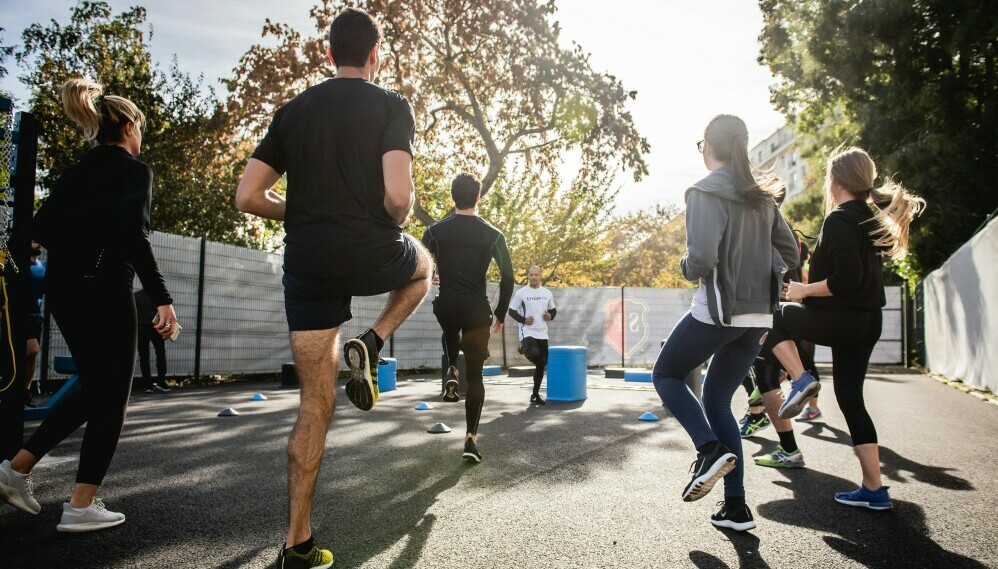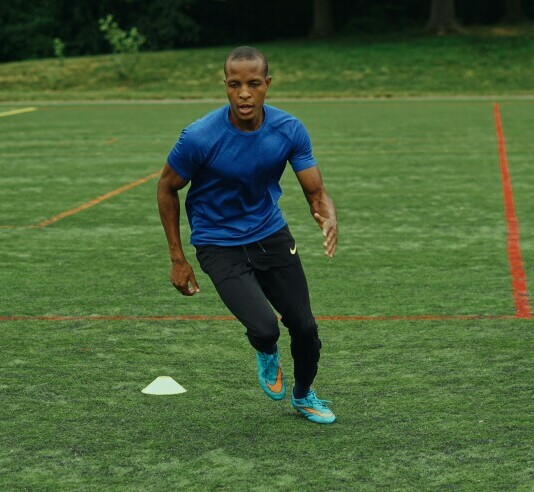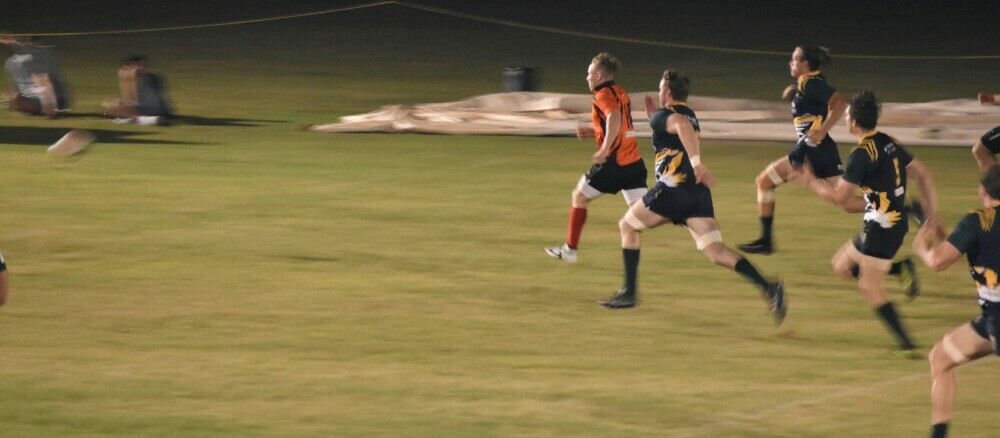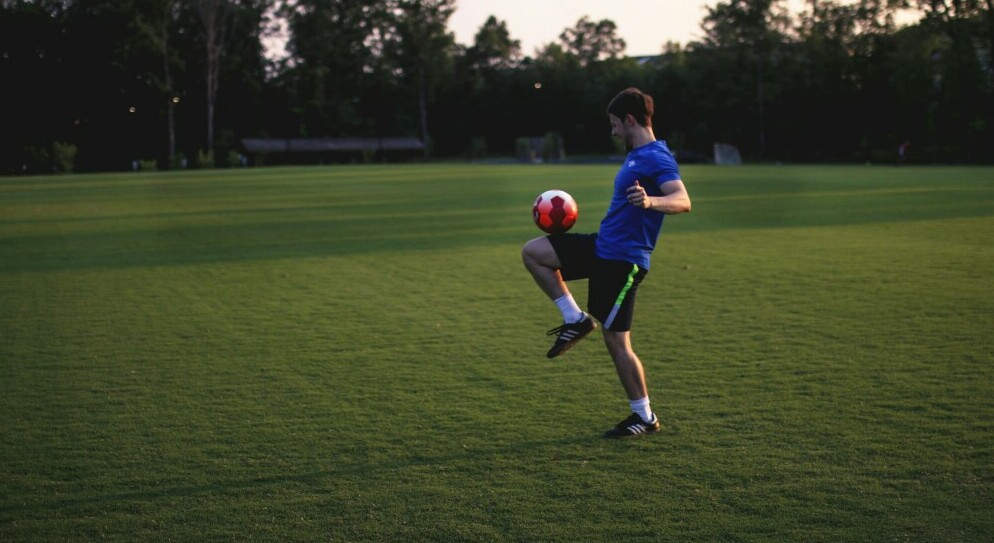When the temperature drops, it’s crucial to start your soccer practice with a dynamic warm-up.
This isn’t just about loosening the muscles; it’s also about raising your core temperature to prevent injury.
So here’s a step-by-step guide to getting players ready for action, even on the coldest days.
Warm up
The warm-up should kick off with high knees, progress to butt kicks, and move on to lunges. Don’t forget to work those arms too—arm circles are great for engaging the upper body. These movements target nearly every muscle group used in soccer and they ramp up heart rates, sending warmth coursing through the body.
Choose something that resonates with your team’s needs and the specific skills you’ll focus on during your session.
Layering
Dressing in layers can make a huge difference. I’m here to help you understand why. Firstly, layers trap air, which is a fantastic insulator, keeping your players cozy. But as they hustle and their bodies generate heat, they should be able to strip off a layer or two. This flexibility prevents overheating and allows them to move freely around the pitch.
By the end of a dynamic warm-up, players should feel ready to tackle the drills ahead with vigor. They’ll be primed to dodge, sprint, and strike, all while protecting their muscles from the harsh elements.
I’m going to guide you through some specific drills, such as Cone Dribbling Relay, in the next section, which take warm and limber players and turn up the competition and skill sharpening.
Skill Development: Focused Soccer Drills for the Cold
You’re going to find out about some specific drills that cater to skill development, even when it’s nippy out.
Cone Dribbling Relay
Let’s start with the Cone Dribbling Relay. This drill not only warms up your players but also sharpens their footwork and speed.
Picture this: a zigzag of cones on frosty grass, each player weaving the ball through with focus and agility.
In my opinion, these drills are best served with a dose of healthy competition. By timing players or setting up team relays, you also foster a team spirit that’s critical in cold conditions. A stopwatch can be your best friend here.
Passing Circles
Now, the Passing Circles aren’t just about keeping the ball moving; they’re about communication and teamwork.
As players get into a rhythm, you can challenge them by increasing the passing speed or adding a second ball into the mix.
Rotate players regularly to maintain involvement and body heat; no one should be standing still for too long.
Onward to Small-Sided Games.
These are essential because they mimic actual match conditions.
I’m talking 3v3 or 4v4, which ensures that each player gets enough touches on the ball and stays on their toes, heat circulating, and muscles primed. Small games mean big movement.
Shooting Drills with Movement
Lastly, don’t forget the Shooting Drills with Movement.
I set up cones or mannequins to simulate defenders.
Players must employ their dribbling skills to navigate this mock defense before taking their shot on goal.
Every shot taken is a chance for players to improve their technique, and it’s also a method to keep them warm and engaged.
Conditioning and Fun: Balancing Intensity with Engagement
I’m going to show you how to keep your soccer training both intense and enjoyable, even when it’s cold out.
This isn’t just about pushing through the chills; it’s also about making sure that your players stay engaged and motivated.
So let’s talk tactics.
Conditioning Sprints
When I mention ‘Conditioning Sprints,’ you might think routine and mundane, but guess what? They are full of opportunities when spiced up with a soccer twist.
Set up sprint intervals where players burst over 20-30 meters, ball at feet or immediately after a pass. It keeps the heart pumping and soccer skills sharp.
Use of taggers
Games like ‘Tag’ can often be a coach’s ace in the hole. Something as simple as freeze tag, where players maneuver their soccer ball while evading taggers, turns an ordinary drill into a laughter-filled skill builder.
It’s a top-pick for both warm-ups and cool-downs.
Juggling Competitions
Now, hosting Juggling Competitions is a surefire way to keep everyone on their toes—literally. Players love to showcase their flair, and keeping the ball airborne with different surfaces hones those fine motor skills that cold weather can stiffen.
Tic-Tac-Toe Passing
Your first attempt at ‘Tic-Tac-Toe Passing’ is going to be an eye-opener. By using a grid made of cones, players have to think on their feet and execute sharp passes to claim squares.
This drill targets their ability to make quick decisions under pressure—a critical skill in the beautiful game.
You can always adjust your approach down the road, but for now, these drills should infuse your cold weather practice with the right mix of hard work and merriment.
Up next, you’ll find ways to ensure you and your team stay sufficiently warm and motivated, no matter the weather.
Staying Warm and Motivated: Tips for Cold Weather Practices
I’m going to round out our session with a guide to ensuring your team stays both warm and game-ready during those frosty practice days.
It’s not just about keeping your body temperature up; it’s also about making cold weather practices something to look forward to.
Remember, thermal undergarments are your secret weapon against the cold. Layer up to trap body heat, and shed those layers as your players’ engines start to rev.
Hydration may slip our minds when the temperature plummets, but it’s just as crucial as it is on hot days.
You can prevent dehydration-related injuries and ensure optimal performance by encouraging regular water breaks.
A good warm-up routine can make or break a practice session in the cold. Emphasize the importance of dynamic routines to keep muscles and joints safe from the bitter temperatures.
Your practice drills should be as sharp as the bite in the air – short but intense. This maximizes engagement while ensuring players are not exposed to the cold any longer than necessary. Preserve interest and body heat with quick, varied drills that keep everyone moving.
Lastly, never underestimate the power of positivity. The cold can be draining, but a supportive and uplifting environment will make your players feel unstoppable. Cheers and high-fives might just be the most crucial part of their cold-weather gear.
Take away
I hope this post has tackled issues to do with cold weather soccer drills.
What has been your experience with training or playing soccer in chilly conditions?? Lets share experiences in the comment section below. Looking forwards to engagement on this subject.
Happy training!!!!!!!!!!
Here’s a little transparency: Our website contains affiliate links. This means if you click and make a purchase, we may receive a small commission. Don’t worry, there’s no extra cost to you. It’s a simple way you can support our mission to bring you quality content.





This is excellent advice. I never thought of freeze tag to relax players while warming them up. And I think the small games are a brilliant idea. These get the heat moving and the muscles zinging. Dehydration is a real danger, especially in Japan during the humid summer – 40degrees sometimes. We have recently resorted to slicing oranges and sucking them in intervals while training. Is this a good idea in your view? Of course, we make sure we have many water breaks, too.
Some super ideas to generate energy as well as laughter! Thank you. It should be fun!!
Thank you for Linden your thoughtful comment! I’m delighted to hear that you found the advice helpful and the drills enjoyable for your players.
Using freeze tag and small games are indeed great ways to keep players active and warm during cold weather. It’s fantastic to hear that you’re integrating these ideas into your training sessions.
Regarding hydration, slicing oranges and having players suck on them during breaks is an excellent idea. Oranges are not only hydrating but also provide a quick source of energy and essential vitamins, which can be especially beneficial in maintaining performance levels during intense training sessions.
Ensuring frequent water breaks is crucial, especially in hot and humid conditions like those in Japan. Dehydration can sneak up on players, so keeping them hydrated with both water and hydrating snacks like oranges is a smart strategy.
Thank you for sharing your experience and for the positive feedback. I’m glad you find the drills both effective and fun. Wishing you and your team a successful and enjoyable training season!